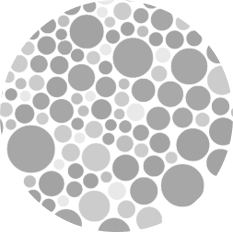
Philippe Bey
Lebanese University
Biochimica et Biophysica Acta | 1985
Frank Bolkenius; Philippe Bey; Nikolaus Seiler
N1-Methyl-N2-(2,3-butadienyl)-1,4-butanediamine (MDL 72521) and N1,N2-bis(2,3-butadienyl)-1,4-butanediamine (MDL 72527) are specific, potent, enzyme-activated, irreversible inhibitors of polyamine oxidase in vitro. These compounds are also capable of completely inhibiting polyamine oxidase in mouse tissues at intraperitoneal doses greater than 20 mg/kg. Enzyme activity reappears in the various organs within 2-3 days to 50% of the control values. Irreversible inhibition of polyamine oxidase in mice led to decreased putrescine (30-40%) and spermidine (10-20%) levels in liver and some other organs. At the same time N1-acetylspermidine and, to a lesser extent, N1-acetylspermine were accumulating at rates which are assumed to be related to the rates of polyamine degradation. Even after treatment with polyamine oxidase inhibitors over a period of 6 weeks at doses which produced complete inhibition of polyamine oxidase in all organs, including the brain, neither toxic effects nor changes in body weight or behaviour were observed.
Tetrahedron Letters | 1984
Patrick Casara; Karin Jund; Philippe Bey
Abstract The entitled allene derivatives have been prepared from the parent α-ethynyl amines and α-amino acids. The corresponding derivative of GABA, putrescine and phenylalanine have been found to be irreversible and time dependent inhibitors of GABA-T, ODC and bacterial AADC, respectively.
Biochimica et Biophysica Acta | 1989
Mark T. Skoog; Shujaath Mehdi; Jeffrey S. Wiseman; Philippe Bey
Relative values of Vmax/Km for hydrolysis of 40 peptide p-nitroanilides catalyzed by human Cl-s and human acrosin are reported. For Cl-s, Ac-Lys(gamma Cbz)-Gly-Arg is the optimum sequence, but 25% of the substrates have (Vmax/Km)rel greater than 0.25 compared to this sequence. The best acrosin substrate tested has the sequence Tos-Gly-Pro-Arg, although (Vmax/Km)rel greater than 0.15 for more than half of the substrates. Proline at P2 is preferred by acrosin. Both enzymes prefer arginine at P1 greater than or equal to 3-fold over lysine and will not accept citrulline. In addition, occupancy of site S3 may yield an increase in Vmax/Km of greater than or equal to 10-fold with either enzyme, but many residues are accepted at S2, S3 and S4. Thus, an acrosin assay using Tos-Gly-Pro-Arg p-nitroanilide as a substrate is more than 20-times as sensitive as existing assays with blocked arginine derivatives.
Journal of Medicinal Chemistry | 1985
Philippe Bey; F.N. Bolkenius; Nikolaus Seiler; Patrick Casara
Archive | 1980
Philippe Bey; Brian Walter Metcalf; Jeffrey S. Wiseman
Tetrahedron Letters | 1970
Philippe Bey; Robert Hanna
Archive | 1980
Philippe Bey; Brian Walter Metcalf; Jeffrey S. Wiseman
Tetrahedron Letters | 1978
Philippe Bey
Tetrahedron Letters | 1977
Philippe Bey
Tetrahedron Letters | 1970
Philippe Bey



